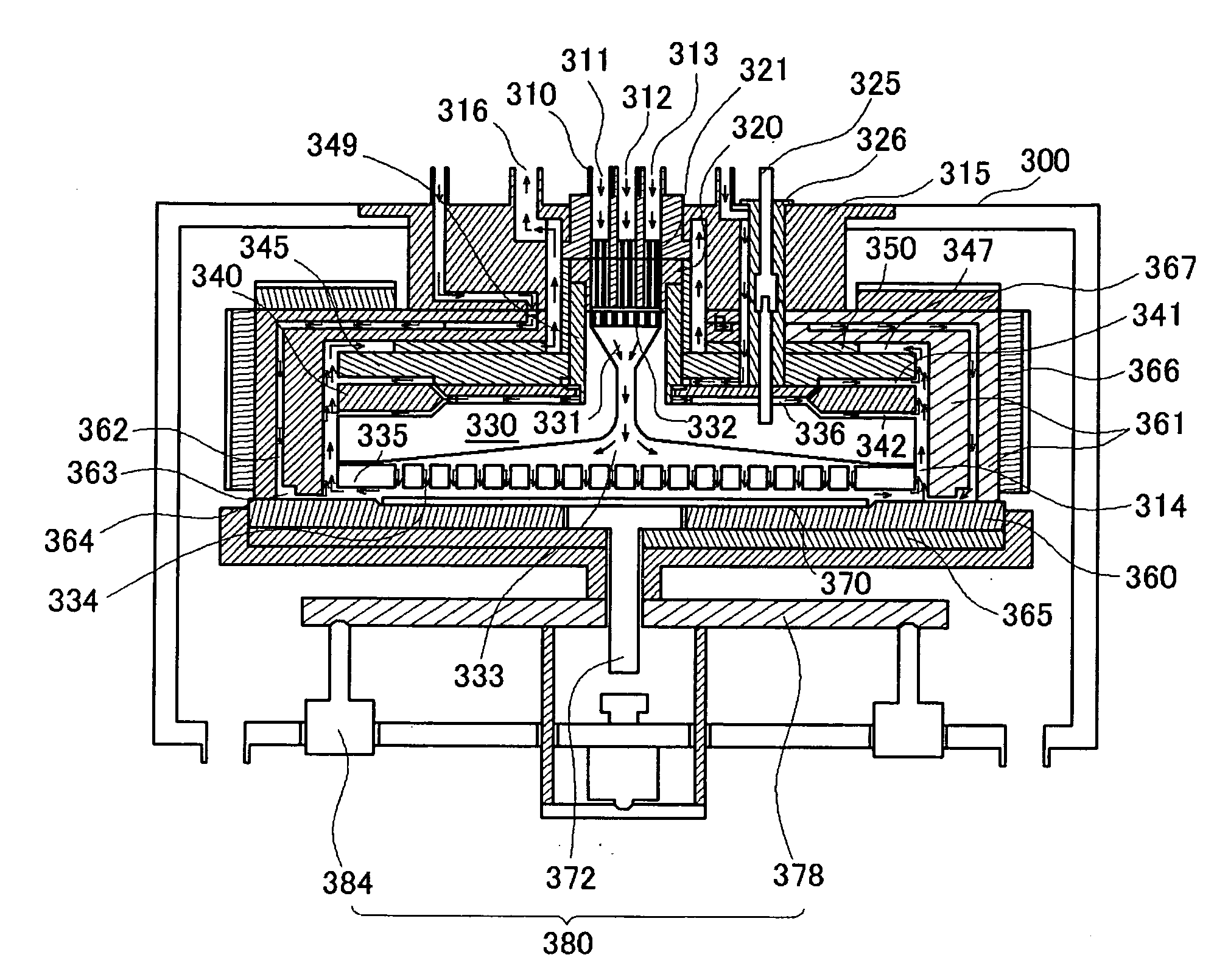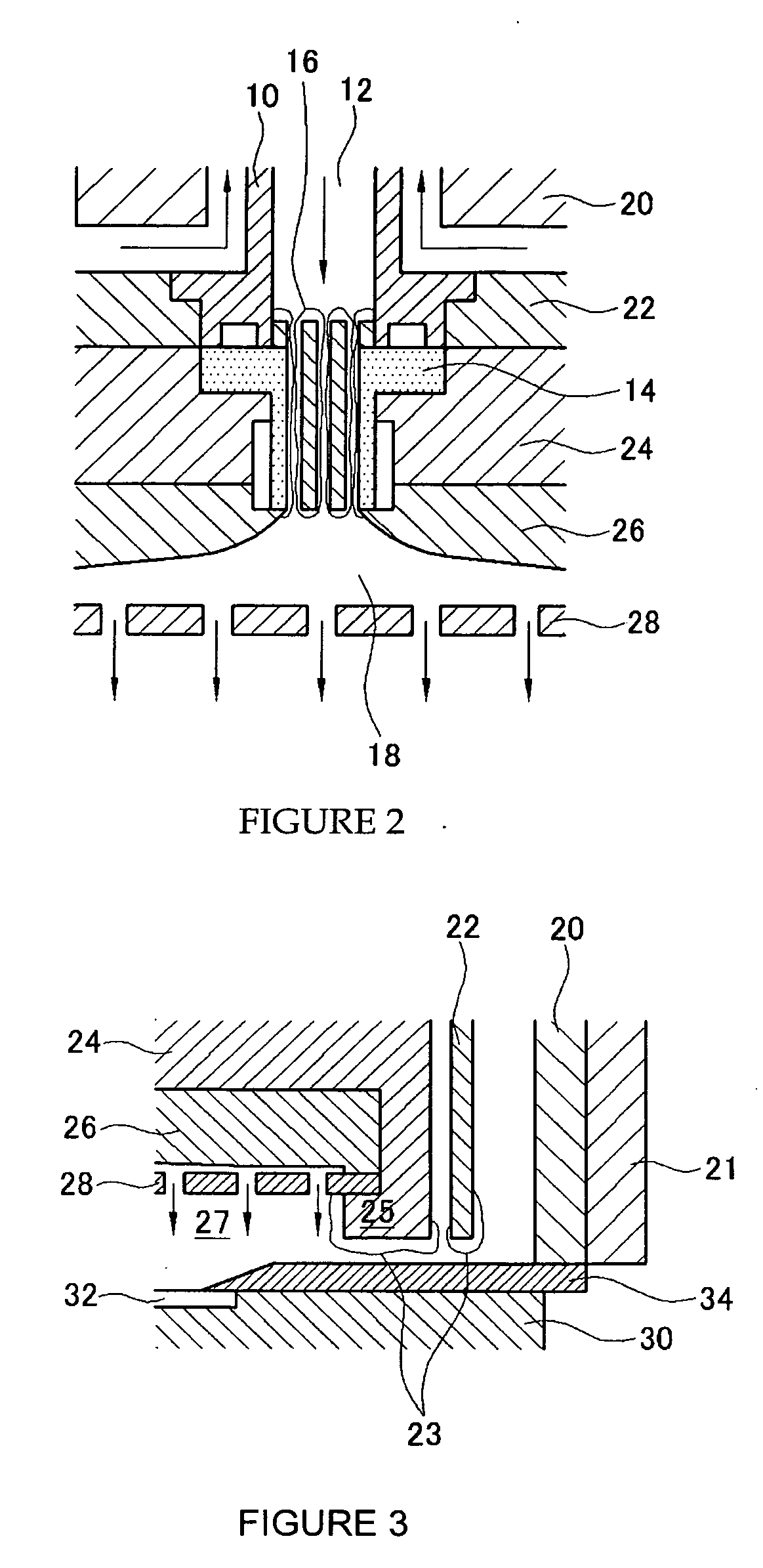Atomic layer deposition apparatus
a technology of atomic layer and apparatus, which is applied in the direction of chemical vapor deposition coating, coating, metallic material coating process, etc., can solve the problems of unsuitable back end of line (beol) metallization process, inability to use multi-layer film deposition or graded film deposition, and inability to use in reaction chambers, etc., to achieve enhanced atomic layer deposition and broaden the choice of source chemicals
- Summary
- Abstract
- Description
- Claims
- Application Information
AI Technical Summary
Benefits of technology
Problems solved by technology
Method used
Image
Examples
Embodiment Construction
[0061] Hereinafter, exemplary embodiments of the present invention will be described in detail with reference to the attached drawings such that the present invention can be easily put into practice by those skilled in the art. The present invention can be embodied in various forms, but is not limited to the embodiments described herein.
[0062] In the drawings, thicknesses are enlarged for the purpose of clearly illustrating layers and areas. In addition, like elements are denoted by like reference numerals in the whole specification.
[0063] An ALD apparatus according to an embodiment of the present invention will be described in detail with reference to FIG. 4. FIG. 4 is a schematic cross sectional view showing an ALD apparatus according to an embodiment of the present invention.
[0064] Referring to FIG. 4, the ALD apparatus according to the embodiment of the present invention includes an outer apparatus wall 300, a gas manifold 315, a gas inflow tube 310, an electrically conductiv...
PUM
| Property | Measurement | Unit |
|---|---|---|
| Diameter | aaaaa | aaaaa |
| Diameter | aaaaa | aaaaa |
| Time | aaaaa | aaaaa |
Abstract
Description
Claims
Application Information
 Login to View More
Login to View More - R&D
- Intellectual Property
- Life Sciences
- Materials
- Tech Scout
- Unparalleled Data Quality
- Higher Quality Content
- 60% Fewer Hallucinations
Browse by: Latest US Patents, China's latest patents, Technical Efficacy Thesaurus, Application Domain, Technology Topic, Popular Technical Reports.
© 2025 PatSnap. All rights reserved.Legal|Privacy policy|Modern Slavery Act Transparency Statement|Sitemap|About US| Contact US: help@patsnap.com



